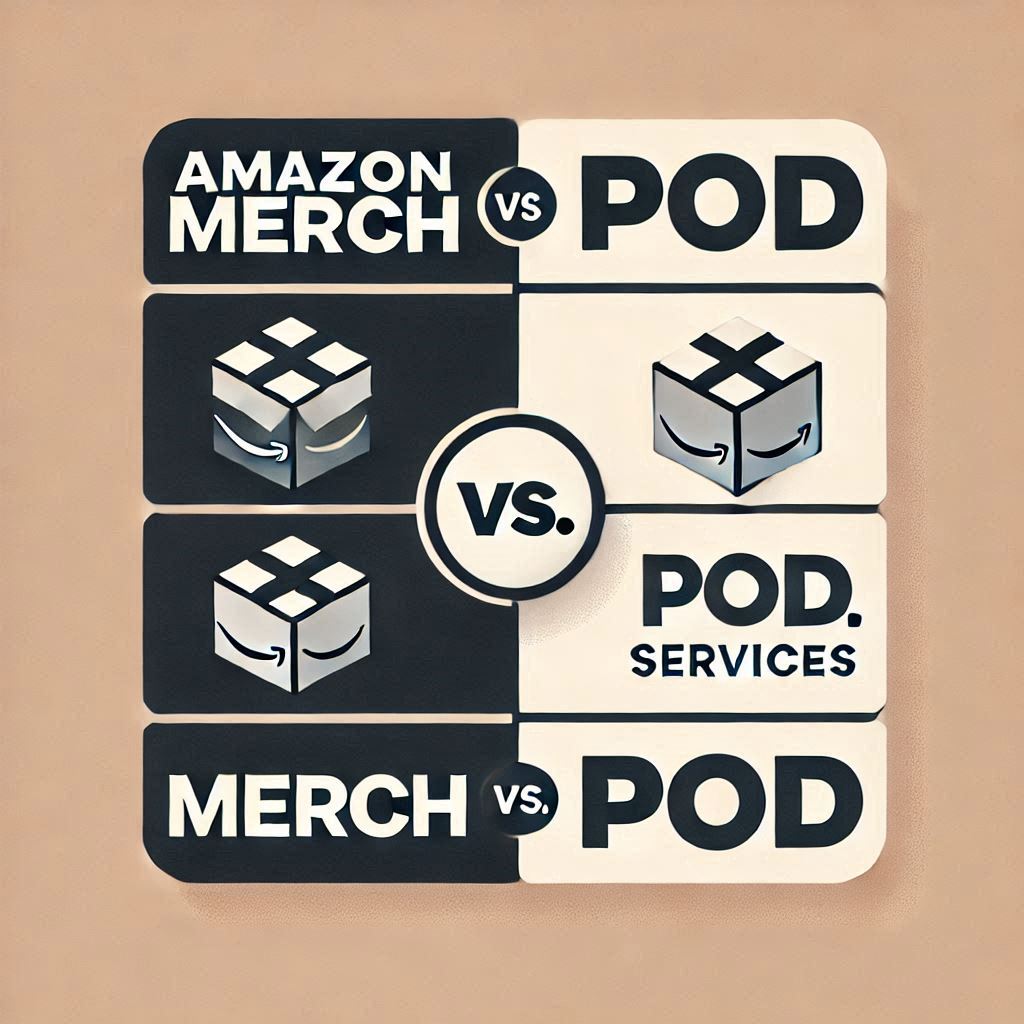The print-on-demand (POD) industry provides an exciting avenue for artists, designers, and entrepreneurs to monetize their creativity without the need for inventory or upfront costs. By uploading your designs to a POD platform, you can sell products like t-shirts, mugs, and wall art while the platform handles production, shipping, and customer service.
Among these platforms, Merch by Amazon stands out due to its integration with the Amazon marketplace. However, alternatives such as Redbubble, Etsy, and Printify also offer unique features and benefits. In this post, we’ll compare Merch by Amazon to these platforms, helping you identify the best fit for your business.
Table of Contents
- Introduction to Print-on-Demand
- Merch by Amazon: An In-Depth Look
- Exploring Alternative Print-on-Demand Platforms
- Key Feature Comparison Table
- Choosing the Right Platform for You
- Tips for Success with Print-on-Demand
- FAQ
- Conclusion
Introduction to Print-on-Demand
Print-on-demand platforms have revolutionized how creators bring their products to market. With no need for upfront investment, you can launch your own merchandise line, offering everything from clothing to home decor. POD platforms act as your partner, handling printing and logistics while you focus on design and marketing.
Popular platforms include Merch by Amazon, Redbubble, and Printify. Choosing the right platform depends on factors like ease of use, profit margins, product range, and access to customers.
Merch by Amazon: An In-Depth Look
Merch by Amazon is one of the most recognizable POD platforms, leveraging Amazon’s extensive marketplace. Its appeal lies in simplicity and scale: you upload your designs, choose a price, and Amazon takes care of production and customer service.
Pros:
- Massive Customer Base: Access to millions of Amazon shoppers.
- Passive Income: Amazon manages fulfillment and customer service.
- Global Reach: Amazon ships to a wide range of locations.
Cons:
- Invitation Only: Entry requires approval through an application process.
- Limited Product Catalog: Primarily apparel, such as t-shirts and hoodies.
- Design Restrictions: Strict guidelines on acceptable content.
Despite its exclusivity, Merch by Amazon remains a top choice for creators seeking a hands-off approach to POD.
Exploring Alternative Print-on-Demand Platforms
While Merch by Amazon offers significant advantages, it may not be the best fit for everyone. Below, we compare it to other platforms often searched for in terms like Redbubble vs Merch by Amazon, Etsy vs Merch by Amazon, and Merch by Amazon vs Printify.
Redbubble
Redbubble is an artist-focused platform offering a wide range of customizable products. It excels in giving creators freedom to set their own pricing margins.
Highlights:
- Product Variety: Includes items like phone cases, stickers, and wall art.
- Creative Control: Artists retain control over pricing.
- Challenges: Limited organic traffic compared to Amazon; requires self-promotion.
Etsy (with POD Integration)
Etsy, though famous for handmade goods, also supports POD businesses via integration with platforms like Printful.
Highlights:
- Established Marketplace: Tap into Etsy’s audience of craft enthusiasts.
- Custom Branding: Build a personal storefront for your brand.
- Challenges: Active marketing and customer engagement are essential.
Printify
Printify stands out for its flexibility, offering connections to multiple print providers worldwide.
Highlights:
- Diverse Product Range: Choose from various suppliers to match your needs.
- Global Reach: Providers across multiple regions ensure fast shipping.
- Challenges: Managing multiple providers can complicate workflows.
Spring (formerly Teespring)
Spring emphasizes campaign-based selling, making it ideal for creators looking to promote limited-time designs.
Highlights:
- Built-in Marketing Tools: Helps drive visibility for campaigns.
- Challenges: Limited focus on long-term brand building.
Key Feature Comparison Table
| Feature | Merch by Amazon | Redbubble | Etsy (with POD Partner) | Printify | Spring |
|---|---|---|---|---|---|
| Product Catalog | Limited (apparel) | Extensive (diverse) | Dependent on partner | Vast (highly diverse) | Focused on apparel |
| Pricing/Royalties | Fixed by Amazon | Artist sets margins | Etsy fees + partner | Varies by provider | Set profit per item |
| Production | Managed by Amazon | Managed by Redbubble | Managed by partner | Provider-dependent | Managed by Spring |
| Customer Base | Large (Amazon users) | Moderate (self-driven) | Niche craft audience | Provider-dependent | Campaign-based |
Choosing the Right Platform for You
The right platform depends on your goals.
- If you prioritize passive income and access to a massive audience, Merch by Amazon is ideal.
- For creative control and product diversity, Redbubble is a great choice.
- To build a dedicated brand, Etsy provides the tools you need.
- For flexibility in production and shipping, consider Printify.
Tips for Success with Print-on-Demand
Design Best Practices
- Create high-resolution designs that resonate with your target audience.
- Avoid overly complex elements that might not print well.
Keyword Optimization
- Use relevant keywords, such as alternative to Merch by Amazon, in your product titles and descriptions.
- Incorporate terms like sites like Merch by Amazon naturally into your listings.
Marketing Strategies
- Leverage social media to promote your products.
- Run targeted ads on platforms like Facebook or Instagram to reach potential customers.
Brand Building
- Establish a unique visual identity and cohesive branding.
- Engage with your audience through newsletters or social media interactions.
FAQ
What profit margins can I expect?
Margins range from 10% to 30%, depending on platform fees and pricing.
How do I protect my designs?
Register designs with copyright authorities and monitor online listings for infringements.
Can I sell on multiple platforms?
Yes, diversifying across platforms like Merch by Amazon and Printify can increase your reach.
Conclusion
The world of print-on-demand offers endless possibilities for creative entrepreneurs. Whether you choose Merch by Amazon, Redbubble, Etsy, or Printify, understanding the nuances of each platform will help you make informed decisions. By aligning your platform choice with your business goals, you can create a successful and sustainable POD brand.

